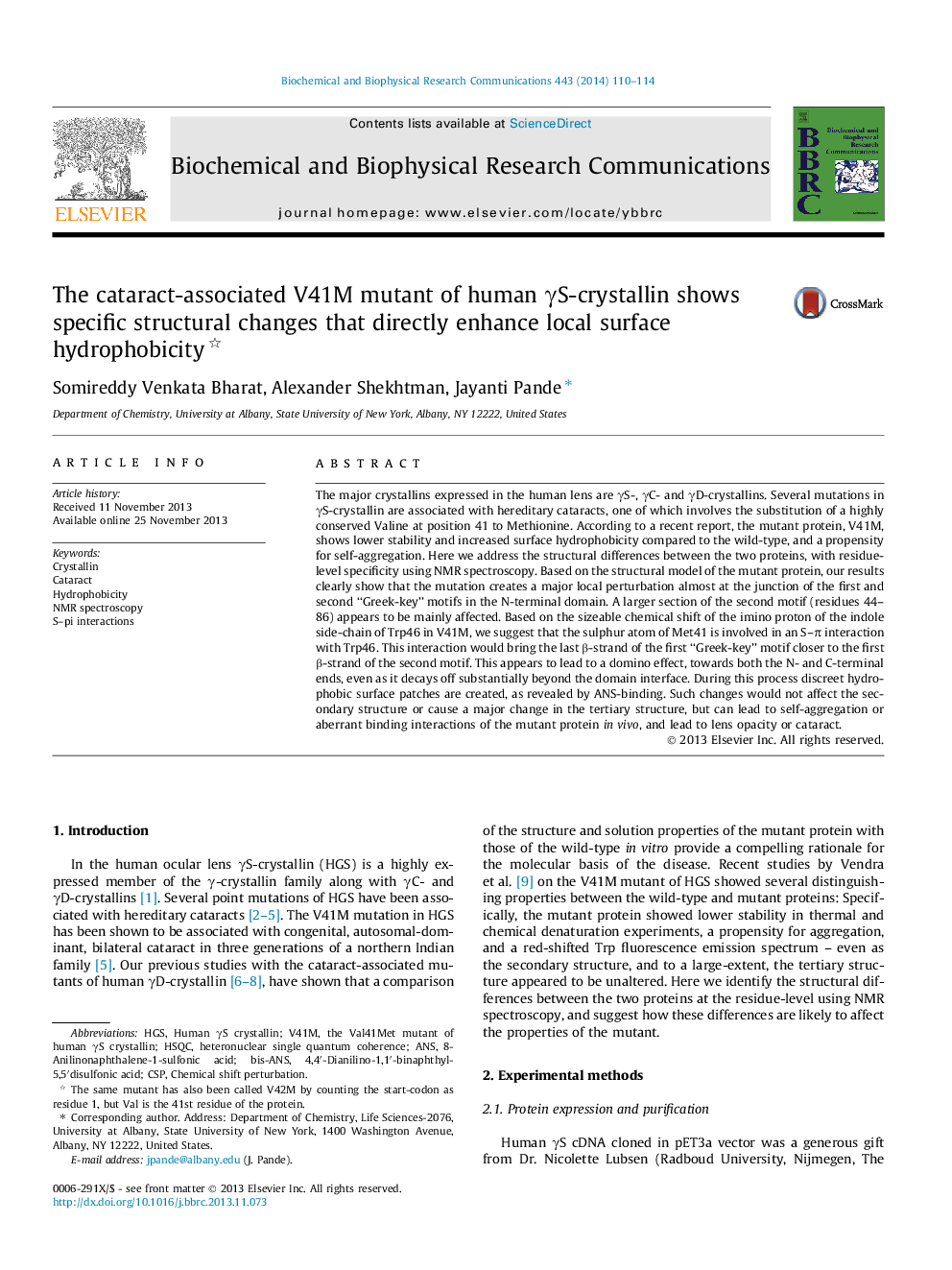| Article ID | Journal | Published Year | Pages | File Type |
|---|---|---|---|---|
| 10757376 | Biochemical and Biophysical Research Communications | 2014 | 5 Pages |
Abstract
The major crystallins expressed in the human lens are γS-, γC- and γD-crystallins. Several mutations in γS-crystallin are associated with hereditary cataracts, one of which involves the substitution of a highly conserved Valine at position 41 to Methionine. According to a recent report, the mutant protein, V41M, shows lower stability and increased surface hydrophobicity compared to the wild-type, and a propensity for self-aggregation. Here we address the structural differences between the two proteins, with residue-level specificity using NMR spectroscopy. Based on the structural model of the mutant protein, our results clearly show that the mutation creates a major local perturbation almost at the junction of the first and second “Greek-key” motifs in the N-terminal domain. A larger section of the second motif (residues 44-86) appears to be mainly affected. Based on the sizeable chemical shift of the imino proton of the indole side-chain of Trp46 in V41M, we suggest that the sulphur atom of Met41 is involved in an S-Ï interaction with Trp46. This interaction would bring the last β-strand of the first “Greek-key” motif closer to the first β-strand of the second motif. This appears to lead to a domino effect, towards both the N- and C-terminal ends, even as it decays off substantially beyond the domain interface. During this process discreet hydrophobic surface patches are created, as revealed by ANS-binding. Such changes would not affect the secondary structure or cause a major change in the tertiary structure, but can lead to self-aggregation or aberrant binding interactions of the mutant protein in vivo, and lead to lens opacity or cataract.
Keywords
Related Topics
Life Sciences
Biochemistry, Genetics and Molecular Biology
Biochemistry
Authors
Somireddy Venkata Bharat, Alexander Shekhtman, Jayanti Pande,
